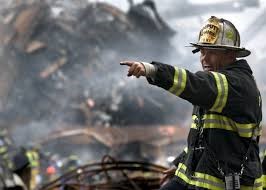
A Bi-Directional Amplifier System Can Save Lives
- Category: Blog

When a first responder enters a burning building, whether it’s an office building, warehouse, hospital, or any other structure, there is immediately an array of dangers that must be faced. Some are obvious; fire, smoke, weakened structures. But there is also another factor that can imperil a first responder’s life… the inability to communicate with each other and with the outside world.
When an emergency arises, it’s imperative that first responders are able to communicate with each other inside your building and with their command staff outside the building, through the use of their two-way radios. Unfortunately, many buildings have areas where the signal strength for these systems isn’t strong enough to ensure they’ll work properly. This can occur due to the building materials, architectural design, construction features (Low-E windows), and overall size, all of which can absorb or block radio communications. As a result, buildings that do not have complete coverage in certain places are at risk of emergency responders not being able to communicate.
Fortunately, there are now ways to make sure emergency personnel can keep on top of what’s going on, and be able to communicate with important parties both inside and outside a disaster.
A Bi-Directional Amplifier (BDA) System is a signal-boosting solution designed to enhance in-building radio frequency (RF) signal coverage for public safety radios. These systems provide buildings with a reliable signal for first responders. This device receives a wireless signal, which can also be enhanced by a module connection, and then it amplifies it and sends the signal outside the building and then rebroadcasts it throughout the interior of your building. It also helps two-way radios and smartphones avoid dropping calls or receiving spotty coverage, while also amplifying existing radio signals and maintaining strong, effective wireless communications for responding emergency personnel. This is helpful during medical emergencies, fires or law enforcement activities. With the right amount of signal strength, efficient communications could save the lives of first responders and building occupants, too.
According to some reports, more than 50% of fire departments have experienced a communications failure during an emergency. Notably, on 9/11, fire, police and other first responders had difficulty communicating in the buildings. Clear warnings were given by command centers for first responders to evacuate because of the obvious structural damage. These warnings were sent 20 minutes before the 2nd tower collapsed. But the lack of signal strength inside the buildings prevented emergency personnel from hearing the evacuation order. This contributed to lives being lost.
No one can predict how many lives may have been saved if a BDA system had been in place back then. But we can say with a degree of accuracy that going forward; many lives will be saved if the ability to communicate—inside and outside—is enhanced by the technology we now possess. Therefore, it is vital to install a BDA system in your facility if you have areas where emergency communications may be impeded.


